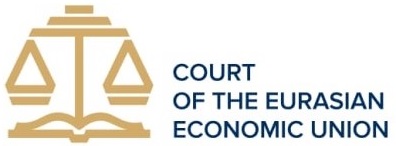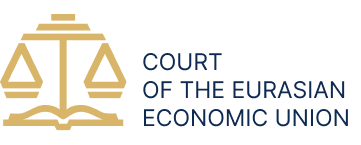 Legal Basics
Legal Basics
The provisions of the Treaty, the Statute of the Court of the Eurasian Economic Union, which is Annex 2 to the Treaty, and the decisions of the Supreme Eurasian Economic Council adopted within the framework of the Treaty form the legal basis for the organisation and functioning of the Court of the Union.
Mission
The mission of the Court is to ensure uniform application by the Member States and the bodies of the Union of the Treaty, international treaties within the Union, international treaties of the Union with a third party and decisions of the bodies of the Union.
Judges
The Court consists of two judges from each Member State of the Union. The judges are appointed by the Supreme Eurasian Economic Council on the proposal of the Member States of the Union. The term of office of a judge is nine years.
All the judges of the Court of the Union have a wide experience of judicial practice, are competent lawyers in various branches of law. In the administration of justice, the judges are equal and have equal status.
The judges elect a President and a Vice-President of the Court for non-renewable 3-year term, who are subsequently approved by the Supreme Eurasian Economic Council.
Since 2021 the position of the President is held by judge Erna Vladimirovna Hayriyan, and the position of Vice-President is held by judge Konstantin Leontyevich Chaika.
The Court carries out the judicial proceedings on the basis of the following principles:
- independence of judges;
- transparency of proceedings;
- publicity;
- equality of the parties to the dispute;
- adversarial nature of the judicial proceedings;
- collegiality.
The Court sits in the Grand Chamber of the Court, the Chamber of the Court and the Appeals Chamber of the Court.
The Grand Chamber of the Court includes all the judges. The Court sits in the Grand Chamber, when an application regarding a dispute is brought by a Member State, or the request for clarification is brought by a Member State, a body of the Union, or the request for clarification is brought by officials and employees of the bodies of the Union and of the Court regarding labour relations.
Two Chambers and two Appeals Chambers have been formed in the Court, each of them includes one judge from each Member State. An Appeals Chamber of the Court is composed of judges of the Court from each Member State who have not participated in the proceedings in the Chamber of the Court. The Court sits in the Chamber, when an application regarding a dispute is brought by an economic entity.
 Astana
Astana  Minsk
Minsk 